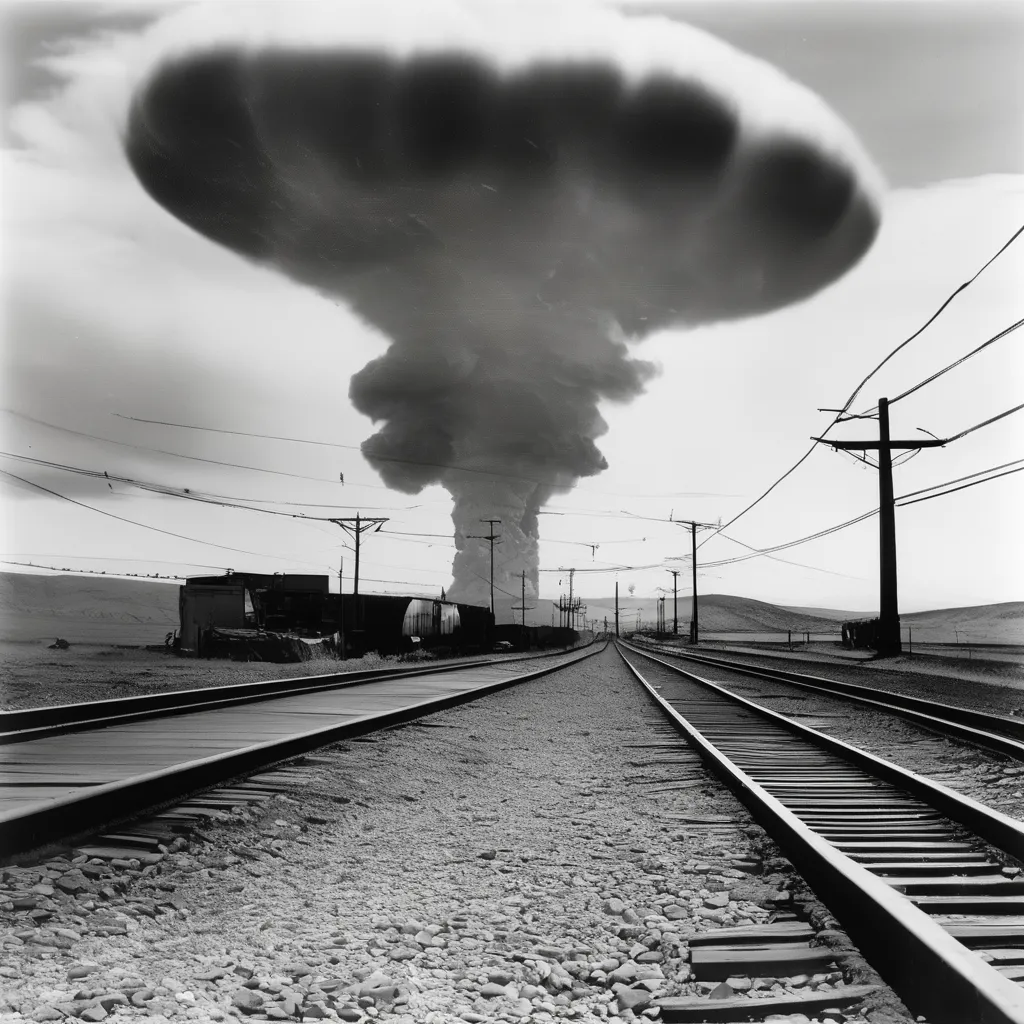From the ancient highlands of Ethiopia to your modern cup, coffee has journeyed through centuries and continents, shaping cultural and social landscapes worldwide. It’s fascinating to consider how a simple discovery of energizing beans by a goat herder could lead to the global coffee phenomenon we know today. Does this historic brew hold the key to battling cancer as well?
Coffee’s rich history is intertwined with tales of trade routes, colonial plantations, and bustling coffeehouses that served as social hubs. Beyond its storied past, contemporary research reveals that coffee contains antioxidant compounds such as chlorogenic acid, which may inhibit cancer cell growth. A comprehensive study indicates that regular coffee consumption could potentially reduce the risk of certain cancers by up to 20%, highlighting its invaluable role in modern healthcare.
The Historical Journey of Coffee
The story of coffee begins in the ancient highlands of Ethiopia. Legend has it that a goat herder named Kaldi discovered coffee after noticing his goats dancing energetically after eating red berries from a certain tree. Intrigued, he tried the berries himself and experienced a boost in energy. News of these energizing beans spread to nearby monasteries, where monks used them to stay awake during long prayer sessions. Coffee soon made its way across the Arabian Peninsula.
As coffee traveled through the Arabian Peninsula, it became a significant part of Muslim culture. By the 15th century, Yemen had cultivated coffee plants, and Sufis drank the brew to help them concentrate during meditation. Coffeehouses, known as qahveh khaneh, started to appear in cities like Mecca and Istanbul. These establishments became essential social hubs where people gathered to drink coffee, listen to music, and engage in conversations. Coffee continued to spread to Persia, Egypt, and the Ottoman Empire.
In the 17th century, coffee finally reached Europe, thanks to Venetian traders. Europeans were initially suspicious of this dark, bitter beverage, even referring to it as the “bitter invention of Satan.” Pope Clement VIII, however, blessed coffee after tasting it, which helped its acceptance. Coffeehouses, known as penny universities, began to open in major cities like London, Paris, and Vienna. They earned their nickname because for the price of a penny, one could buy a cup of coffee and enjoy intellectual discussions.
The 18th century saw coffee plantations taking root in the New World. European colonists began cultivating coffee in places like the Caribbean, Central and South America. This expansion made coffee a global commodity, deeply intertwined with the history of colonialism and trade. Today, coffee is one of the world’s favorite beverages, enjoyed by millions daily. Here are some regions known historically for their coffee production:
- Yemen
- Ethiopia
- Brazil
- Colombia
Discovering Coffee: The Ethiopian Legend
Long ago, in the ancient Ethiopian region of Kaffa, a goat herder named Kaldi made a surprising discovery. He noticed that his goats became exceptionally lively after eating red berries from a certain bush. Curious, Kaldi tried the berries himself. To his astonishment, he felt a sudden surge of energy. This remarkable experience led him to share his findings with a nearby monastery.
The monks at the monastery were initially skeptical but decided to test the berries’ effects. They quickly realized that the berries helped them stay awake during long prayer sessions. Excited by this newfound energy source, they began to cultivate the coffee plants. Word of the invigorating berries spread rapidly, reaching other monasteries and villages. Soon, coffee became a vital part of Ethiopian culture.
Trade routes played a key role in disseminating coffee beyond Ethiopia’s borders. Merchants carried the precious beans to Yemen, where they flourished in the Arab world. Coffee’s popularity soared as people discovered its energizing properties. It’s fascinating to think that this global beverage started from a simple observation by a goat herder. Ethiopia remains proud of its rich coffee heritage.
Modern-day Ethiopia still celebrates its coffee traditions with elaborate coffee ceremonies. These ceremonies emphasize the importance of community and hospitality. During the ritual, coffee beans are roasted, ground, and brewed in a special pot called a jebena. The aromatic brew is then shared among friends and family. This tradition highlights coffee’s deep-rooted significance in Ethiopian culture:
- Roasting and grinding beans
- Brewing in a jebena
- Sharing with the community
Coffee in the Age of Exploration: The Colonization Factor
The Age of Exploration saw European powers venturing into new lands to expand their territories and trade routes. Coffee quickly became a sought-after commodity during this period. Dutch traders played a crucial role in spreading coffee cultivation beyond the Arab world. They established coffee plantations in their colonies, including Java in Indonesia. This marked the beginning of coffee’s global journey.
The French and British soon followed suit, eager to compete in the burgeoning coffee market. The French introduced coffee plants to their colonies in the Caribbean, such as Martinique and Saint-Domingue (now Haiti). Coffee thrived in these tropical climates, leading to large-scale plantations. To power these plantations, colonizers relied heavily on slave labor, which created a dark chapter in coffee’s history. Despite the grim circumstances, coffee remained an essential economic driver for these colonial economies.
Spain also joined the coffee cultivation race by planting beans in its South American colonies, particularly in Venezuela and Colombia. These regions, blessed with ideal growing conditions, became major coffee producers. The beans were exported back to Europe, fueling the continent’s growing coffee culture. The exchange of coffee transformed economies and societies, making it a pivotal crop during colonization. By the 18th century, coffee was a staple commodity in global trade.
Today, the legacy of coffee cultivation during the Age of Exploration can still be seen in its diverse growing regions. Many countries that were once colonies continue to be leading coffee producers. These include:
- Indonesia
- Brazil
- Colombia
- Honduras
The Role of Coffeehouses: From Social Hubs to Intellectual Arenas
Coffeehouses first appeared in the Islamic world in the 16th century. Known as qahveh khaneh, these establishments were more than just places to drink coffee. They became vibrant centers for social interaction, hosting musical performances, poetry readings, and public discussions. People from all walks of life gathered to exchange ideas and enjoy each other’s company. Coffeehouses soon earned the nickname “Schools of the Wise.”
When coffeehouses made their way to Europe in the 17th century, they quickly gained popularity. In cities like London, Paris, and Vienna, these establishments became essential gathering spots for intellectuals and businessmen. Known as penny universities, coffeehouses charged a penny for a cup of coffee, offering entry to deep discussions and debates. Patrons included writers, philosophers, and political figures, who engaged in lively conversations about pressing issues of the day.
The coffeehouses of London played a particularly significant role in the cultural and intellectual life of the city. Famous establishments like Lloyd’s Coffee House eventually evolved into major institutions, such as Lloyd’s of London and the London Stock Exchange. These places were central to the exchange of information and the formation of business ventures. Coffeehouses became crucial for networking and knowledge sharing, laying the groundwork for modern financial markets.
In Paris, coffeehouses became the epicenter of the Enlightenment. Thinkers like Voltaire and Rousseau frequented these spaces, discussing ideas that would change the world. These establishments fostered an environment where new philosophies and scientific discoveries could flourish. They also provided a neutral ground for political debates, influencing decisions that shaped modern Europe. The impact of Parisian coffeehouses on intellectual thought cannot be overstated.
Vienna’s coffeehouses were famous for their sophisticated atmosphere and artistic influence. Frequented by musicians like Mozart and Beethoven, these spaces became hotbeds of creativity. Artists and writers found inspiration and support within these walls. Vienna’s unique coffeehouse culture contributed significantly to the city’s artistic legacy, making it a cultural hub. The tradition of the Viennese coffeehouse continues to this day, celebrating both its rich history and its modern relevance.
Today, coffeehouses remain popular worldwide, serving as both social hubs and workspaces. Modern coffeehouses often feature free Wi-Fi and comfortable seating, catering to a diverse clientele. They continue to be places where people come together to share ideas, work on projects, or simply relax. The enduring appeal of coffeehouses highlights their lasting role in fostering community and intellectual exchange.
Coffee and Human Health: Unveiling the Anti-cancer Potential
Coffee is more than just a morning kickstart; it has significant health benefits. Studies have shown that regular coffee consumption can reduce the risk of several types of cancer. This is largely due to the presence of antioxidants in coffee. These compounds help to neutralize harmful free radicals in the body. Research continues to explore the full extent of coffee’s protective effects.
Antioxidants in coffee include chlorogenic acid and quinic acid. These substances have been found to have anti-inflammatory properties as well. Inflammation is linked to the development of many chronic diseases, including cancer. By reducing inflammation, coffee can help to lower cancer risk. This makes it an important part of a healthy diet for many people.
Coffee also contains beneficial compounds like polyphenols and diterpenes. Polyphenols have been shown to inhibit cancer cell growth and promote cell repair. Diterpenes, specifically cafestol and kahweol, have protective effects against cancer through various mechanisms. These include reducing oxidative stress and promoting the detoxification of carcinogens. The combined impact of these compounds makes coffee a powerful anti-cancer agent.
Meta-analyses and large-scale studies support the link between coffee and reduced cancer risk. For example, a study involving over half a million participants found that those who consumed coffee regularly had a lower risk of developing liver cancer. Other studies have shown similar results for colorectal, breast, and prostate cancers. Here are some key findings:
- Lower risk of liver cancer
- Reduced incidence of colorectal cancer
- Protective effects against breast cancer
- Potential benefits for prostate cancer prevention
While the evidence is promising, it’s essential to remember that coffee is not a standalone cure. A balanced diet and healthy lifestyle are crucial for overall cancer prevention. However, incorporating coffee into your daily routine can offer additional protective benefits. As research progresses, we may discover even more ways coffee supports good health.

Scientific Insights into coffee’s Anti-cancer Effects
Recent scientific studies have shed light on coffee’s potential anti-cancer properties. Research has identified several bioactive compounds in coffee, such as chlorogenic acid, that contribute to its health benefits. Chlorogenic acid is particularly effective at reducing oxidative stress, a key factor in cancer development. By neutralizing free radicals, it helps to protect cells from damage. This explains why coffee is often linked to a lower risk of developing certain cancers.
Another critical component in coffee is caffeic acid, which has been shown to suppress the growth of cancer cells. Laboratory studies indicate that caffeic acid can inhibit the proliferation of cells that lead to tumor formation. Moreover, it promotes apoptosis, a process where damaged cells self-destruct. This dual action makes caffeic acid a valuable ally in cancer prevention. These findings have been supported by various peer-reviewed journals.
Polyphenols in coffee also play a significant role in its anti-cancer effects. They not only act as antioxidants but also exhibit anti-inflammatory properties. Inflammation is a known contributor to the initiation and progression of cancer. By reducing inflammation, polyphenols help to create an environment less conducive to cancer development. This adds another layer of protection, making coffee a multi-faceted tool in the fight against cancer.
In addition to individual compounds, studies have focused on the overall impact of coffee consumption on cancer risk. A large-scale analysis published in the British Medical Journal reviewed data from multiple studies. The analysis found that individuals who drank three to four cups of coffee daily had a significantly lower risk of liver and colorectal cancers. Here’s a summary of findings:
- Three to four cups of coffee daily lowers liver cancer risk
- Lower incidence of colorectal cancer
- Potential benefits observed for breast and prostate cancer
While these scientific insights are promising, researchers emphasize the need for more long-term studies. It’s important to consider other lifestyle factors that contribute to overall health. Nonetheless, the existing evidence strongly supports coffee’s role in reducing cancer risk. Future research may further clarify how to maximize these protective benefits.
Frequently Asked Questions
Coffee has a rich history and many health benefits. Below are some common questions and answers about coffee’s journey and its positive impact on health.
1. How was coffee discovered?
Coffee was discovered by an Ethiopian goat herder named Kaldi. He noticed his goats became energetic after eating red berries from a particular bush. Curious, Kaldi tried the berries himself and experienced increased energy. He shared his discovery with monks at a nearby monastery.
The monks used these berries to help stay awake during long prayer sessions. This led to the widespread cultivation of coffee in Ethiopia and beyond. News of this miraculous berry spread rapidly, making coffee an integral part of the region’s culture.
2. How did coffee spread to Europe?
Coffee spread to Europe through trade routes established during the Age of Exploration. Venetian traders brought it from the Arab world in the 17th century. Initially greeted with suspicion, it gained acceptance when Pope Clement VIII blessed it after finding it delicious.
This endorsement helped coffeehouses become popular social hubs in major European cities like London, Paris, and Vienna. These establishments became centers for intellectual discourse and business dealings, further embedding coffee into European society.
3. What are the main health benefits of drinking coffee?
Drinking coffee offers several health benefits due to its high antioxidant content. Antioxidants like chlorogenic acid neutralize free radicals, reducing oxidative stress—a key factor in chronic diseases like cancer. Coffee also has anti-inflammatory properties that help lower inflammation in the body.
Regular consumption has been linked to a reduced risk of certain cancers, type 2 diabetes, and neurodegenerative diseases like Alzheimer’s and Parkinson’s disease. It can also improve mood and cognitive function by stimulating neurotransmitters such as dopamine.
4. Why is chlorogenic acid important for cancer prevention?
Chlorogenic acid is essential for cancer prevention because it’s a powerful antioxidant found in coffee beans. It helps neutralize harmful free radicals that can damage cells and lead to cancerous growths over time.
This compound also reduces inflammation—a significant contributor to cancer development—by inhibiting pro-inflammatory enzymes. The combined effects make chlorogenic acid a vital component in reducing overall cancer risk when included in a balanced diet.
5.How should one consume coffee for maximum health benefits?
To maximize health benefits, it’s best to drink freshly brewed black or lightly sweetened coffee without added sugars or high-fat creams.As excessive additives can counteract some beneficial effects.Aiming for moderate consumption—about three to four cups daily—is ideal.
Additionally,varieties such as filter-brewed or cold brew may retain more antioxidants than methods involving boiling water directly.so,the choice of brewing method can also impact nutrient preservation.
–>
>
Conclusion
Coffee’s rich history from ancient Ethiopia to modern-day global popularity showcases its social and cultural impact. It has journeyed through many hands and played pivotal roles in trade, social hubs, and intellectual discussions. This legacy underscores its enduring appeal and significance.
Beyond its historical importance, coffee offers valuable health benefits, notably its potential to reduce cancer risk. Packed with antioxidants and anti-inflammatory compounds, coffee supports healthier living when consumed moderately. Thus, the cup of coffee enjoyed around the world continues to enrich both tradition and health.







